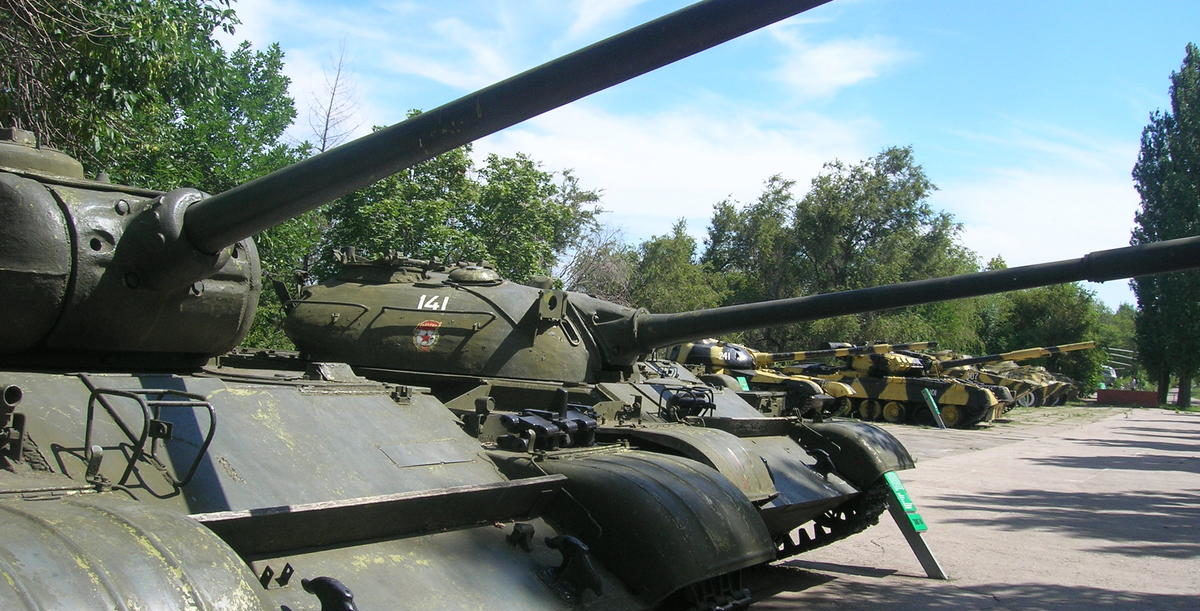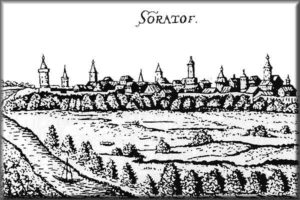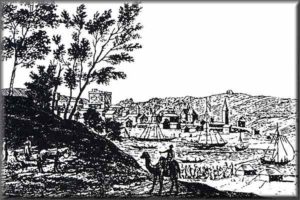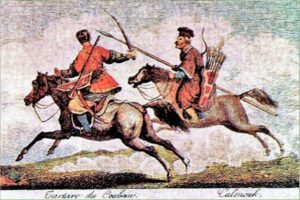They would not let you in Saratov not long ago!
Saratov is one of the oldest and biggest Russian cities in the Volga region. Before the city was founded here in the Bronze age (XX-XIX century b.c.) ancient people were living here under the ground in the caves. Today you can see their ruins, ancient coins and tools in a small village “Alekseevskoe town”.
In a time of Tatar-mongol invasion (XIII-XIV century a.d.) their place was taken by nomads and barbarians. They founded a new city called Uvek that belonged to Mongol empire. In 1395 — 1396 Tamerlane totally destroyed Uvek and put an end to the nomads history. During the next 200 years this territory was absolutely empty.
Saratov in its modern meaning was built only from the third attempt, all of them were made from 1590 till 1674. The first birth year of Saratov is 1590 – the settlement was aimed at keeping an eye on nomads and destroying their aggressive mobs, when they tried to cross south-eastern border of the Russian state, as well as protecting ships, which traveled along the Volga river, but this first city was destroyed by a great fire in 1614.
In 1617 Saratov was built again on the other side of the Volga river. Nowadays another city called Engels is located there. This second attempt to build Saratov wasn’t lucky again — another fire consumed it, and in 1674 it was rebuilt again on the other side of the river under the Tsar decree.
There are many versions of the “Saratov” origin, but the main suggestion is that it comes from Tatar language. Words “sary” (yellow) and “tau” (mountain) combined together give something like “Saratau” or “Saratov”, which means “yellow mountain”. It is supposed to refer to a mountain that’s called Falcon mountain now. Other versions are also based on the Tatar language, but some of them say that Saratov comes from “sar” (downhill) “atov” (island) or “saryk” (hawk) “atov” (island).
Many European travelers and discoverers of new lands (for example Adam Olearius (germ.) — 1636; Jan Jansen Struys (holl.) — 1669) came to Saratov and left some notes and pictures about it.
“It’s a small city in the valley near the Volga river. Because of Cossacks, Tatars, Kalmyks neighborhood it has strong military garrison.” — Jan Jansen Struys.
Up to 1718 Saratov remained a military fortress. In 1797 it officially became the main city of Saratov district and unofficially the main city of the whole Volga region. New administrative buildings – provincial government, court, treasury and library — appeared in the centre of the city. Built by the best architects they were gorgeous pieces of art.
Saratov inhabitants were mostly craftsmen – blacksmiths, butchers, tailors and etc, but during the Patriotic War of 1812 a lot of new professions appeared. Local workshops started producing cannons, rifles and spears. Later during the Great Patriotic War of 1941-1945 the story repeated once again — factories produced military equipment for Soviet soldiers and Saratov played a great role in gaining the victory. The military machinery of that war is displayed in the Victory Park and museum. Also, since that time Victory Day on May,9 is one of the biggest national holidays in Russia.
Modern history of Saratov and the Volga region is strongly connected with science and industrial development as well as agricultural development. The Saratov district is the biggest electricity provider of Russia and also the heart of wheat growing lands.







У меня есть вопрос!